Alliance For democracy In Iran
Please have a look at my other weblog, Iran Democracy - http://irandemocray.blogspot.com/
IMPERIAL EMBLEM

PERSIA
Shahanshah Aryameher
S U N OF P E R S I A
Iranian Freedom Fighters UNITE
Saturday, August 25, 2007
BE WORRID, BE VERY WORRID
The Revolt of Arab-Iranians : Amir Taheri, Arab News
Is the Islamic Republic of Iran facing a growing revolt by its Arab minority?
Until a couple of years ago, the question would have sounded naive or provocative. In the 1980s, Arab-Iranians had fought bravely against Saddam Hussein’s forces despite the fact that they were linked to the invading Iraqis by ethnic, tribal, linguistic and religious ties going back 1300 years.
According to data from the Foundation for the Martyrs, an organization supposed to look after war veterans and the families of the war dead, the number of Arab-Iranians who died for the fatherland was proportionally four times higher than Iranians from other ethnic backgrounds. And, yet, in the past two years evidence has mounted that Arab-Iranians, disenchanted by the Islamic republic and angry at Tehran’s increasingly repressive policies under President Mahmoud Ahmadinejad, are drawn toward dissidence and revolt. Last year, rising tension in a number of Khuzestani towns and villages forced Ahamdinejad to cancel his much-publicized visit to the province. (Later, he managed a shortened version of the trip amid tight security.)
In the past few weeks, the authorities have executed 11 men in connection with the nascent Arab revolt. Hundreds more have been arrested and shipped to jails in unknown destinations. Earlier this month, bands of Arab youths ran riot in the streets of Ahvaz, capital of the southwestern province of Khuzestan, attacking government offices and banks and setting official cars on fire. According to eyewitnesses, the authorities had to bring in special Baseej (Mobilization) militia units to regain control. The pro-government militia later raided a number of neighborhoods, including Khazaalyiah and Kut-Abdallah, where ethnic Arabs form a majority, arresting dozens of people. Among them was Thamer Ahvazi, regarded as one of the province’s top musical pop stars. His crime? Singing “defiant” rap-style songs in Arabic. There are no accurate figures regarding the number of ethnic Arabs in Iran. The best estimates, however, put the number at around 2.2 million, or more than three percent of the total population. They are stretched over 600 kilometers of territory, from the borders of Iraq to the Straits of Hormuz on the Gulf of Oman. More than half, however, live in Khuzestan, Iran’s oil-rich province that also produces a good part of the nation’s food, including almost all of its sugarcane and 80 percent of its date crops. Until the late 1940s, ethnic Arabs were in majority in Ahvaz, the provincial capital and Khorrmashahr, the nation’s biggest port until its destruction by Saddam Hussein in 1981. Now, however, ethnic Arabs account for less than 25 percent of the population in Ahvaz, and just some 40 percent in Khorramshahr. Nevertheless, ethnic Arabs still form a majority in smaller towns along the border with Iraq, including Shadegan, Howeyzeh, Karkheh, and Dasht-Mishan. The population of the Iranian portion of the Mesopotamian marshlands is also almost entirely Arab. The province’s mainly Arab feature changed for several reasons. First, the discovery of oil in 1908 led to an economic boom that created new job opportunities that the locals could not fulfill. Hundreds of thousands of peoples from provinces in the Iranian heartland poured into Khuzestan, first as temporary laborers and then as permanent residents. The second reason was a government policy, formulated in 1928, to “Persianize” Arab majority areas by bringing whole families of farmers from distant provinces, including Khorassan some 1000 miles away. The newcomers revived the province’s moribund agriculture, introduced new crops and, as they prospered, multiplied faster than native Arabs who remained largely excluded from the new economy. The introduction of the military draft also helped the change. Many ethnic Arabs decided to smuggle their male children to the Arab coast of the Gulf to avoid obligatory military service. Most never returned.
Sometimes whole families and clans emigrated to avoid the draft and taxation by an increasingly assertive central government in Tehran. At the same time, the better-educated ethnic Arabs moved north to settle in Tehran, the capital, and other major cities in the Iranian heartland where they gradually lost their Arab identity. It is hard to identify the exact causes of the current tension in Khuzestan. One source of tension is the emergence in neighboring Iraq of a new government dominated by Arab Shiites. In the Islamic republic, however, not a single ethnic Arab is in any key government position. Many Arab Shiites try to live on both sides of the Iran-Iraq border without having lost their ancient bonds of blood and tradition. The Bani Kaab, the Bani Amer, the Bani Tamim and other smaller tribes have always moved and intermarried regardless of the border fixed in 1921 when the British crated the new Iraqi state out of three Ottoman provinces. The dream of a unified Arab Shiite state, encompassing central and southern Iraq as well as the Iranian province of Khuzestan, which Arab nationalists call “Arabistan”, appeals to many activists on both sides of the border. Not surprisingly, some local tribal chiefs and even Shiite mullahs are trying to use that dream to build a constituency for themselves. Another source of the tension is the activities of a number of armed groups, some of which set up by Saddam Hussein in the 1970s as a means of exerting pressure on Tehran. These groups, often linked to armed smuggling networks operating in both Iran and Iraq, have been mainly responsible for attacks on border posts and police stations in a number of towns close to the border. The main source of the tension, however, is the central government’s policy of implicit discrimination against the Arab minority. This is especially manifest in state-owned corporations where non-Arabs have an automatic advantage in terms of job opportunities, grades and pay. Arabs are also at a disadvantage when it comes to places in higher education. Entry into Iranian universities is through a tough set of examinations known as “konkour”. Ethnic Arabs disadvantaged at the examination because they usually come from worst rated secondary schools, do not quite master the Persian, the language of the tests, and are unfamiliar with specific questions dealing with Persian culture and literature. As a result, an ethnic Arab’s chance of getting into an Iranian university is 12 times lower than his compatriots from Tehran, Shiraz or Isfahan. Demands that at least 10 percent of places at local universities be reserved for ethic Arabs have been turned down by successive Islamic republic administrations in Tehran. Ahmadinejad regards positive discrimination as “un-Islamic”. One outlet for Arab-Iranian grievances is the so-called Khuzestan Welfare Party that calls for greater autonomy for the province within the Iranian state. Created in 1946, the party disappeared in the mid-1950s, to reappear in 2005. No one can gauge its strength. But it provides a moderate alternative to the radical Ahvaz Liberation Front (ALF) that has preached armed struggle since the 1970s. The revolt of Arab-Iranians is in its early stages. There is, as yet, no evidence that it might degenerate into secessionism. Ahmadinejad’s repressive policies, however, could help those who claim that ethnic Arabs would be better off in a secular democratic state with their Iraqi Shiite Arab brethren than remaining within an Islamic republic dominated by chauvinistic mullahs. The outside world should pay attention to what is happening in Khuzestan if only because it produces almost 70 percent of the oil that Iran exports each day.
Iranian Operatives Step Up Flow of Weapons and Training to Iraq : August 24, 2007 AFP
WASHINGTON -- Iranian Revolutionary Guard Corps operatives are trying to sabotage US security gains in Iraq by stepping up the flow of arms and training to Shiite extremist groups, a top US commander charged Friday. Major General Rick Lynch said about 20 Iranian Revolutionary Guard Corps (IRGC) members are believed to be operating in his area in central Iraq on southern and eastern outskirts of Baghdad. "The scale of the Iranian problem is especially troubling when you look at the numbers of weapons we found and destroyed since the start of the surge," Lynch told reporters here via video link from Iraq. He said US forces have captured 117 Iranian-made munitions since April, including rockets, armor piercing explosives and mines. His soldiers have been targeted 48 times with armor piercing explosives made in Iran, also known as explosively formed penetrators, or EFPs. Eight US soldiers from Multi-National Division Center have been killed by EFPs since the division's deployment to Iraq in April, he said. The general said attacks with Iranian-made rockets also have grown more precise, accounting for the deaths of five US soldiers. He described an incident in which a US surveillance drone spotted 46 Iranian-made rockets with Iranian-made timers lined up for an attack on a US forward operating base. They were disabled, but a rocket fired at the base killed a soldier and wounded 15 others on July 11, he said. Videos of the rockets being lined up were found about two weeks ago in a raid east of Baghdad that captured a man who Lynch said was a link between Iran and the Mahdi army, a Shiite militia loyal to radical cleric Moqtada al-Sadr. Tool markings and other manufacturing evidence left no doubt that the components for the captured weapons were made in Iran, he said. Assembled in Iraq, EFPs have gone primarily to Shiite militias but also have been found among Sunni groups, according to Lynch. "I believe in my battlespace I've got IRGC surrogates -- people that have been trained by the IRGC in Iran and come back in Iraq to conduct acts of violence," he said "And I believe I've got some members of the IRGC, some Iranians working in our battlespace. What they do is they transit the battlespace. They don't come in and stay. They go on back and forth," he said. "I do believe that at any given time I've got up to about 20 Iranians working in our battlespace, who are either training Iraqis to conduct acts of violence or to conduct acts of violence themselves," he said.
White House Raps Iran Over Iraq Unrest : August 24, 2007 AFP
CRAWFORD, United States -- The White House warned Friday that alleged Iranian weapons flows into Iraq were at odds with Tehran's public statements that it wants to help stabilize its war-torn neighbor. "We've made it very clear that Iranian activity inside Iraq has not been helpful," national security spokesman Gordon Johndroe told reporters as US President George W. Bush spent time on his Texas ranch. Johndroe accused Iran of being two-faced in its dealings with the United States, pointing to recent talks between top officials from Tehran and the US Ambassador in Baghdad, Ryan Crocker. "The Iranians state publicly every time they meet with Ambassador Crocker that they want to play a constructive role inside Iraq. Yet, according to our commanders on the ground, we see an increased flow of very deadly explosively formed projectiles. That is not playing a constructive role in Iraq," he said. "Those weapons supplied by Iranians to militias are responsible for the deaths of American soldiers. The support of those militias is responsible for the deaths of innocent Iraqis. It is an understatement to say that that kind of activity is not useful, nor helpful," said the spokesman. Johndroe, who had been asked whether such activities would justify military action against Iran, declined to answer directly. "Americans are being killed inside Iraq and US forces are taking appropriate force protection measures to deal with it," he said. His comments came after a top US commander in Iraq charged that Iranian Revolutionary Guard Corps operatives were trying to sabotage US security gains in Iraq by stepping up the flow of arms and training to Shiite extremist groups.
Is the Islamic Republic of Iran facing a growing revolt by its Arab minority?
Until a couple of years ago, the question would have sounded naive or provocative. In the 1980s, Arab-Iranians had fought bravely against Saddam Hussein’s forces despite the fact that they were linked to the invading Iraqis by ethnic, tribal, linguistic and religious ties going back 1300 years.
According to data from the Foundation for the Martyrs, an organization supposed to look after war veterans and the families of the war dead, the number of Arab-Iranians who died for the fatherland was proportionally four times higher than Iranians from other ethnic backgrounds. And, yet, in the past two years evidence has mounted that Arab-Iranians, disenchanted by the Islamic republic and angry at Tehran’s increasingly repressive policies under President Mahmoud Ahmadinejad, are drawn toward dissidence and revolt. Last year, rising tension in a number of Khuzestani towns and villages forced Ahamdinejad to cancel his much-publicized visit to the province. (Later, he managed a shortened version of the trip amid tight security.)
In the past few weeks, the authorities have executed 11 men in connection with the nascent Arab revolt. Hundreds more have been arrested and shipped to jails in unknown destinations. Earlier this month, bands of Arab youths ran riot in the streets of Ahvaz, capital of the southwestern province of Khuzestan, attacking government offices and banks and setting official cars on fire. According to eyewitnesses, the authorities had to bring in special Baseej (Mobilization) militia units to regain control. The pro-government militia later raided a number of neighborhoods, including Khazaalyiah and Kut-Abdallah, where ethnic Arabs form a majority, arresting dozens of people. Among them was Thamer Ahvazi, regarded as one of the province’s top musical pop stars. His crime? Singing “defiant” rap-style songs in Arabic. There are no accurate figures regarding the number of ethnic Arabs in Iran. The best estimates, however, put the number at around 2.2 million, or more than three percent of the total population. They are stretched over 600 kilometers of territory, from the borders of Iraq to the Straits of Hormuz on the Gulf of Oman. More than half, however, live in Khuzestan, Iran’s oil-rich province that also produces a good part of the nation’s food, including almost all of its sugarcane and 80 percent of its date crops. Until the late 1940s, ethnic Arabs were in majority in Ahvaz, the provincial capital and Khorrmashahr, the nation’s biggest port until its destruction by Saddam Hussein in 1981. Now, however, ethnic Arabs account for less than 25 percent of the population in Ahvaz, and just some 40 percent in Khorramshahr. Nevertheless, ethnic Arabs still form a majority in smaller towns along the border with Iraq, including Shadegan, Howeyzeh, Karkheh, and Dasht-Mishan. The population of the Iranian portion of the Mesopotamian marshlands is also almost entirely Arab. The province’s mainly Arab feature changed for several reasons. First, the discovery of oil in 1908 led to an economic boom that created new job opportunities that the locals could not fulfill. Hundreds of thousands of peoples from provinces in the Iranian heartland poured into Khuzestan, first as temporary laborers and then as permanent residents. The second reason was a government policy, formulated in 1928, to “Persianize” Arab majority areas by bringing whole families of farmers from distant provinces, including Khorassan some 1000 miles away. The newcomers revived the province’s moribund agriculture, introduced new crops and, as they prospered, multiplied faster than native Arabs who remained largely excluded from the new economy. The introduction of the military draft also helped the change. Many ethnic Arabs decided to smuggle their male children to the Arab coast of the Gulf to avoid obligatory military service. Most never returned.
Sometimes whole families and clans emigrated to avoid the draft and taxation by an increasingly assertive central government in Tehran. At the same time, the better-educated ethnic Arabs moved north to settle in Tehran, the capital, and other major cities in the Iranian heartland where they gradually lost their Arab identity. It is hard to identify the exact causes of the current tension in Khuzestan. One source of tension is the emergence in neighboring Iraq of a new government dominated by Arab Shiites. In the Islamic republic, however, not a single ethnic Arab is in any key government position. Many Arab Shiites try to live on both sides of the Iran-Iraq border without having lost their ancient bonds of blood and tradition. The Bani Kaab, the Bani Amer, the Bani Tamim and other smaller tribes have always moved and intermarried regardless of the border fixed in 1921 when the British crated the new Iraqi state out of three Ottoman provinces. The dream of a unified Arab Shiite state, encompassing central and southern Iraq as well as the Iranian province of Khuzestan, which Arab nationalists call “Arabistan”, appeals to many activists on both sides of the border. Not surprisingly, some local tribal chiefs and even Shiite mullahs are trying to use that dream to build a constituency for themselves. Another source of the tension is the activities of a number of armed groups, some of which set up by Saddam Hussein in the 1970s as a means of exerting pressure on Tehran. These groups, often linked to armed smuggling networks operating in both Iran and Iraq, have been mainly responsible for attacks on border posts and police stations in a number of towns close to the border. The main source of the tension, however, is the central government’s policy of implicit discrimination against the Arab minority. This is especially manifest in state-owned corporations where non-Arabs have an automatic advantage in terms of job opportunities, grades and pay. Arabs are also at a disadvantage when it comes to places in higher education. Entry into Iranian universities is through a tough set of examinations known as “konkour”. Ethnic Arabs disadvantaged at the examination because they usually come from worst rated secondary schools, do not quite master the Persian, the language of the tests, and are unfamiliar with specific questions dealing with Persian culture and literature. As a result, an ethnic Arab’s chance of getting into an Iranian university is 12 times lower than his compatriots from Tehran, Shiraz or Isfahan. Demands that at least 10 percent of places at local universities be reserved for ethic Arabs have been turned down by successive Islamic republic administrations in Tehran. Ahmadinejad regards positive discrimination as “un-Islamic”. One outlet for Arab-Iranian grievances is the so-called Khuzestan Welfare Party that calls for greater autonomy for the province within the Iranian state. Created in 1946, the party disappeared in the mid-1950s, to reappear in 2005. No one can gauge its strength. But it provides a moderate alternative to the radical Ahvaz Liberation Front (ALF) that has preached armed struggle since the 1970s. The revolt of Arab-Iranians is in its early stages. There is, as yet, no evidence that it might degenerate into secessionism. Ahmadinejad’s repressive policies, however, could help those who claim that ethnic Arabs would be better off in a secular democratic state with their Iraqi Shiite Arab brethren than remaining within an Islamic republic dominated by chauvinistic mullahs. The outside world should pay attention to what is happening in Khuzestan if only because it produces almost 70 percent of the oil that Iran exports each day.
Iranian Operatives Step Up Flow of Weapons and Training to Iraq : August 24, 2007 AFP
WASHINGTON -- Iranian Revolutionary Guard Corps operatives are trying to sabotage US security gains in Iraq by stepping up the flow of arms and training to Shiite extremist groups, a top US commander charged Friday. Major General Rick Lynch said about 20 Iranian Revolutionary Guard Corps (IRGC) members are believed to be operating in his area in central Iraq on southern and eastern outskirts of Baghdad. "The scale of the Iranian problem is especially troubling when you look at the numbers of weapons we found and destroyed since the start of the surge," Lynch told reporters here via video link from Iraq. He said US forces have captured 117 Iranian-made munitions since April, including rockets, armor piercing explosives and mines. His soldiers have been targeted 48 times with armor piercing explosives made in Iran, also known as explosively formed penetrators, or EFPs. Eight US soldiers from Multi-National Division Center have been killed by EFPs since the division's deployment to Iraq in April, he said. The general said attacks with Iranian-made rockets also have grown more precise, accounting for the deaths of five US soldiers. He described an incident in which a US surveillance drone spotted 46 Iranian-made rockets with Iranian-made timers lined up for an attack on a US forward operating base. They were disabled, but a rocket fired at the base killed a soldier and wounded 15 others on July 11, he said. Videos of the rockets being lined up were found about two weeks ago in a raid east of Baghdad that captured a man who Lynch said was a link between Iran and the Mahdi army, a Shiite militia loyal to radical cleric Moqtada al-Sadr. Tool markings and other manufacturing evidence left no doubt that the components for the captured weapons were made in Iran, he said. Assembled in Iraq, EFPs have gone primarily to Shiite militias but also have been found among Sunni groups, according to Lynch. "I believe in my battlespace I've got IRGC surrogates -- people that have been trained by the IRGC in Iran and come back in Iraq to conduct acts of violence," he said "And I believe I've got some members of the IRGC, some Iranians working in our battlespace. What they do is they transit the battlespace. They don't come in and stay. They go on back and forth," he said. "I do believe that at any given time I've got up to about 20 Iranians working in our battlespace, who are either training Iraqis to conduct acts of violence or to conduct acts of violence themselves," he said.
White House Raps Iran Over Iraq Unrest : August 24, 2007 AFP
CRAWFORD, United States -- The White House warned Friday that alleged Iranian weapons flows into Iraq were at odds with Tehran's public statements that it wants to help stabilize its war-torn neighbor. "We've made it very clear that Iranian activity inside Iraq has not been helpful," national security spokesman Gordon Johndroe told reporters as US President George W. Bush spent time on his Texas ranch. Johndroe accused Iran of being two-faced in its dealings with the United States, pointing to recent talks between top officials from Tehran and the US Ambassador in Baghdad, Ryan Crocker. "The Iranians state publicly every time they meet with Ambassador Crocker that they want to play a constructive role inside Iraq. Yet, according to our commanders on the ground, we see an increased flow of very deadly explosively formed projectiles. That is not playing a constructive role in Iraq," he said. "Those weapons supplied by Iranians to militias are responsible for the deaths of American soldiers. The support of those militias is responsible for the deaths of innocent Iraqis. It is an understatement to say that that kind of activity is not useful, nor helpful," said the spokesman. Johndroe, who had been asked whether such activities would justify military action against Iran, declined to answer directly. "Americans are being killed inside Iraq and US forces are taking appropriate force protection measures to deal with it," he said. His comments came after a top US commander in Iraq charged that Iranian Revolutionary Guard Corps operatives were trying to sabotage US security gains in Iraq by stepping up the flow of arms and training to Shiite extremist groups.
Subscribe to:
Post Comments (Atom)












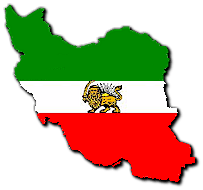











 اخبار مربوط به زندانیان سیاسی و نقض حقوق بشر
اخبار مربوط به زندانیان سیاسی و نقض حقوق بشر




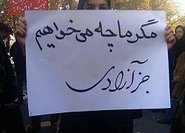




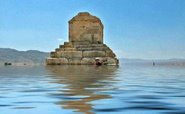






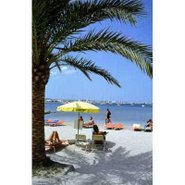
 Tulips in Holland
Tulips in Holland
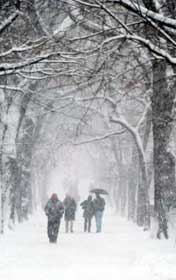











No comments:
Post a Comment